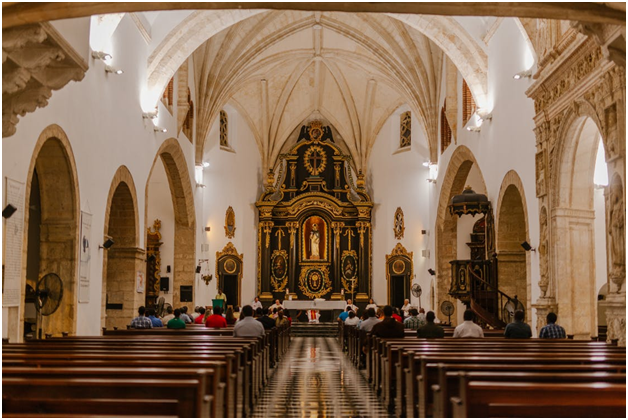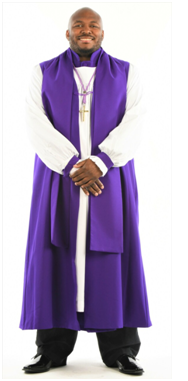High-Quality Bishop Vestments: What You Need?
Jan 10th 2022

High-quality bishop vestments are not only important for falling in line with diocesan requirements for vestiture, but also as a mark of respect for the office. It is only a peremptory measure to obey orders. Your search for quality, impressive liturgical vestments should go beyond that. Ours certainly has.
For us, it’s about respect to the congregation and paying honor to the Lord as much as it is about observing tradition. It just seems that tradition has helped us in this venture.
Why Are Bishop Vestments Important?
A bishop is an ordained member of the clergy that holds a particular senior office. Typically, a bishop is entrusted to oversee both ministerial duties as well as general administration within a diocese. This is one of the most senior positions available to ordained members of the clergy within a diocese.
Because this is a highly exalted position, there is some rigid standardization regarding what should constitute a bishop’s vestments, although this may vary slightly.
In addition to paying respect to the office help by the bishop, and to the diocese, quality bishop vestments are necessary to inspire churchgoers with awe and admiration.
What Does a Bishop Wear?
Exactly what a bishop will wear may depend on the diocese, but some of the most common bishop’s vestments are the following:
●Cassocks: Bishops share cassocks in common with other members of the clergy, and in fact, cassocks were once seen more like an everyday dress than as actual vestments which are typically worn during the ceremony. A priest might wear a cassock as he or she goes about daily life, and not just while presiding over a ceremony.
Many priests wear black cassocks, but it is customary for bishops to wear purple cassocks instead. In keeping with tradition, the cassock may be worn when the bishop is visiting another diocese or otherwise engaged in ministerial duties. It can also be worn under a rochet, chimere, and tippet, in which case it will be referred to as a bishop’s choir dress.
●Rochets: A rochet, which makes up a component of the choir dress mentioned above, is typically made from white cotton or linen. Similar to an alb, a rochet is a long, white garment with loose, white sleeves that are often ruffled or otherwise adorned.
●Chimeres: The chimere is a sleeveless garment often worn by Anglican bishops over the cassock and rochet. Though it is believed to have originated as a component of academic dress, today it constitutes the choir dress of a bishop.
●Stoles or Tippets: Stoles and tippets may appear similar but they serve different functions. The stole is a long strip of cotton, linen or silk that is worn over the shoulders of an ordained member of the clergy engaged in the Eucharist or other sacraments. The stole typically matches the liturgical color at the given time of year and may or may not be ornately embellished with embroidery or symbols.
The tippet appears similar in nature to the stole and is typically worn in the same manner, but it is not reserved for sacraments. The bishop may wear the tippet over the cassock, rochet, and chimere as a part of choir dress.
●Alb: The alb is a long white garment, typically of linen or cotton, that reaches to the ankle. When a bishop wears an alb, it is worn under a garment known as a chasuble. One interpretation of the alb as a component of bishop vestments is that the alb symbolizes the purity of the soul that is required to participate in mass.
●Chasuble: The chasuble is one of the most immediately recognizable of the bishop’s vestments. It is a simple vestment, consisting of cloth, draped over the shoulders and falling over the body, with a simple hole at the center for the head.
The chasuble is often worn during mass, and as is customary, a bishop’s chasuble may often be purple. However, it is equally fitting to match the color of the chasuble to that most appropriate for the time in the liturgical calendar.
●Pectoral Cross: It is also customary for a bishop to wear a pectoral cross - that is, it is a cross that is worn across the chest, typically suspended by the neck from a chain or cord. This pectoral cross design is one of the most distinctive identifiers of a bishop.
Why Are Bishop Vestments Purple?
As you can see from our 8-piece Bishop Vestment Set, bishop attire is often colored purple. But why is this the case when purple is a color typically reserved for periods of penitence?
It is actually believed by some that this is why the color purple was chosen specifically for bishops. As seniors in their diocese, it was expected that they would understand the weight of the sin they carried and would lead penitent lives. It could also be that purple, such as Roman purple, was once a color reserved for royalty in the ancient world, and since bishops hold such high office, the color was fitting.
Whatever the case, today, the color purple is often used to distinguish bishops from priests, deacons, and other members of the clergy. Church vestments for priests and other clergymen are often black or white by contrast.
Come See for Yourself!
Interested in learning more about bishop vestments? Would you like to come to see for yourself what high-quality vestments and clergy robes in white, red, and gold trim are available in our collection?
Get in touch with us at 877-453-3535 or come visit us in our showroom in Hamilton, New Jersey and you’ll be able to get a better feel for our vestments!